 About 2,000+ armoured vehicles 1990-2025+.
About 2,000+ armoured vehicles 1990-2025+.
- PT-91 Twardy
- Leopard 2PL
- K2GL
- BWP-1M Puma
- BWP Borsuk IFV
- KTO Rosomak
- M120 Rak
- AHS Krab
- K9PL
- S-125SC Newa-SC
- WZT-1/2 ARV/CEV
- PTG K61
- TRI CEV
- WZT-3M
- MID Bizon-S
- SUM kalina
- ISM Kroton
- BLG-60 ABLV
- BLG-67
- AMZ Dzik
- AMZ Bóbr-3
- LPU Wirus 4
- Raycolt KLTV
- Waran
- Heron
- Universal Track Carrier LPG
Post-1990 vehicles
Models
Poland was during the cold war an indispensable satellite state within the Soviet sphere of influence, user but also producer of Soviet(related designs. In 1991 and afterwards started a new phase to modernize the park which went with opening to the west and a private economy. The third phase was a gradual rapprochement with NATO, then full integration in 1999 and change of standards from Soviet to Western designs (and beyond, like South Korea recently).- Polish-built T-54/55: Still some T-55AMS, T-55AD-1M in storage
- Polish built T-72M/T-72M1 (Bumar-Łabędy plant, Gliwice, 1982) & T-72M1D (command variant) in storage
- Polish built WZT-3 (1989): ARV based on the T-72M and its 1990-2000s export variants
- Polish built SJ-09, driver training vehicle.
- Polish built BWP-1M "Puma 1" (and sub-variants):
- Polish built 2S1 Goździk, local variant of the 2S1 Gvodzika SPG
- Polish built Opal, local variant of the MT-LB tractor, also the ZWD-1, Lotos, Przebiśnieg and other sub-variants
- Polish built OT-64 Skot, Custom APC built with Czech components
- Polish built LPG based on the Opal, artillery command vehicle (modern)
- Polish built ZWDSz 1, local version of the MT-LBu by Huta Stalowa Wola S.A. (modern)
After the cold war
The Polish Industry was already well experienced and respected, just as the Czech ones, for a quality generally above what was done in Russia. In all, 2,855 Polish T-54AMs were manufactured at the Bumar-Labedy from 1956 to 1967, differing by details, before turning to a new model, the T-72 Main Battle Tank. The 1980s political events contributed to a loss of authority from Moskow, leading to the gradual collapse in 1989 with Solidarnosz in Poland leading the movement from a shipyard at Gdańsk. From massive strikes in 1988 and despite hard reaction by Marshal Jaruzelski, Lech Wałęsa's movement became a fully flegded political party with the first democratic national elections from June 1989, recoignising the victory of Lech Wałęsa, first president. Full independence of Poland and its opening to the West was acted in 1991.The Army remained neutral under Marshal Jaruzelsk unwilling to launch a "tanks in the streets" old style intervention. Immediately after independence it was recoignised the Army was left with an obsolescent park of AFVs and needed modernization and re-organization. Before this happened there was already a move to modernize at home T-55 tanks, notably to the T-55AM Mérida standard. By late 1988 the new T-72M1 (obiekt 172M-E5) and T-72M1K emerged ffrom the Polish Research and Development Centre of Mechanical Systems or "OBRUM" from Gliwice as new design bureau.
However in 1990 instead t continue upgrading the T-72 and upgrade the old T-55 park, the new staff pushed for a fully domestic design, with full support at all levels. The "Wilk" or "wolf", later cancelled was a radical upgrade of the T-72 already produced in poland, but judged not advanced enough. It was thus further developed as the Twardy. The monumental task was to offer the Polish Army with a new version adapted to modern warfare and pushed in all direction, mobility, armour, fire control, gun stabilisation, night vision with new local electronics and purchase of Western systems when needed. This became the truly Polish main battle tank PT-91 Twardy, the most important Polish MBT design of the last 30 years.
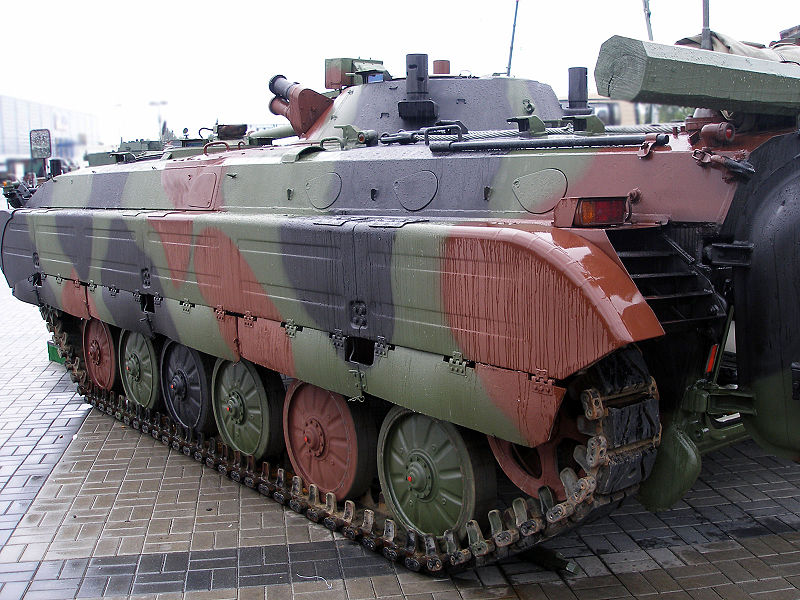
Polish BWP-1M Puma, the modernized IFV proposed in mutiples variants
If MT-LB & 2S1 Gvozdika were produced in Poland (Huta Stalowa Wola) the second being known as the 2S1 Goździk received a special amphibious kit and was upgraded with a TOPAZ digital fire control system (WB electronics). It was assorted by a FONET-IP digital intercom system, new digital radio, military GPS receiver, military computer and dedicated software. Many of these were also integrated into the AHS Krab, Dana-T and WR-40 Langusta.
As for the legacy BTR-60/70, some were locally modified for special purposes such as urban protection or with a OU-3 infrared searchlight, notably used by the Milicja Obywatelska and ZOMO units or the Polish Ministry of Internal Affairs. But these represented few vehicles. Instead, Poland built with Czechoslovakia the excellent OT-64 and purchased the Hungarian-built FUG-440, instead of fielding the BRDM-2 which Poland had in small numbers, but modernized.
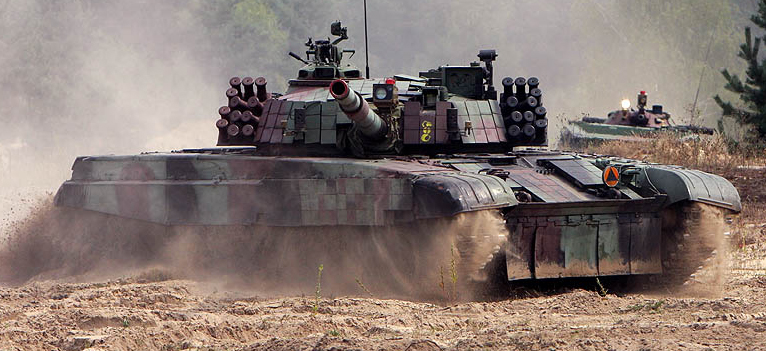
The Pt-91 Twardy seemed an interesting transitional tank, between the locally produced T-72M1 and the perhaps future Polish Tanks, like the impressive OBRUM PL-01, although the latter is an IFV, not an MBT. The Leopard 2A7/NG seems to be the next MBT, possibly with an envisioned local production.
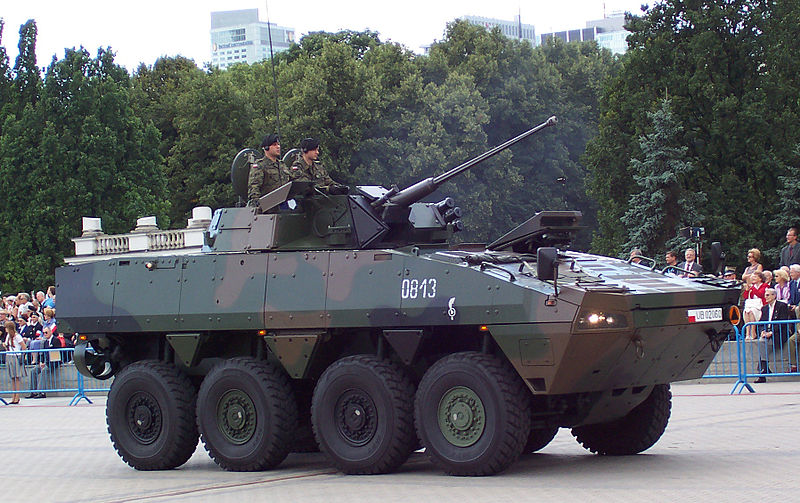
The KTO Rosomak, another strong symbol of this renewal of the Polish military industry. It looks obviously as another design influenced by the Mowag Piranha 8x8 family, a versatile platform that could be tailored as IFV, APC, ambulance, command post... These form the bulk of the Polish APC force today.
External interventions (Bosnia, Afghanistan)
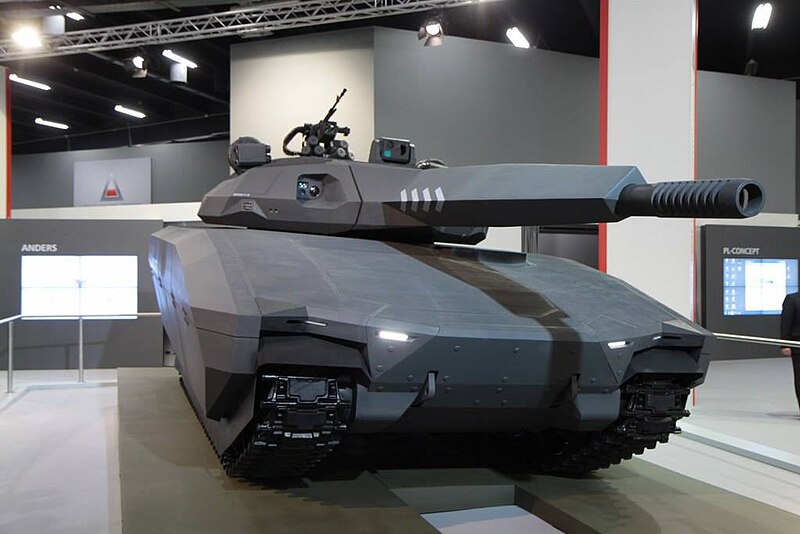
PL-01, the Infantry Fighting Vehicle of the Polish Army developed in the 2000s, now developed as the BWP Borsuk currently in production with 1000 ordered, a dozen built or in construction.
Current Military Structure
In 1992, the Kraków Military District was recreated and out of the original nine divisions, in 2001 it was planned to reduce these to four plus six independent brigades. From January 1999, and adherence to NATO standards, Poland was divided into two military districts:-Pomeranian (Pomorski Okręg Wojskowy, HQ Bydgoszcz) for northern Poland
-Silesian Military District (Śląski Okręg Wojskowy, HQ in Wrocław) for southern Poland.
The former Krakow Military District became the Air-Mechanized Corps HQ, then 2nd Mechanised Corps HQ.
On 1 September 2011 the 1st Warsaw Mechanised Division was disbanded and under General Edward Pietrzyk from 2000 to September 2006, then General Waldemar Skrzypczak (2006–2009) great strides were made to stick to NATO unit structures, notably for narrower cooperation and communication. In May 2014 MoD Tomasz Siemoniak planned the attack helicopters in response to the Dinbass war already and by 25 November 2015, the chief of National Defence Commission Michał Jach, urged the returned to a large standing army, from 100,000 to 150,000, until being toned down.
The 2022 full invasion of Ukraine in June however changed eveything. Not only an increase of the Polish armed forces to 300,000 was acted, but the formation of two new mechanized divisions was announced with an objective to return to none divisions or more, far better equipped than the old ones of the 1990s. Poland had been hard at procurement after 2022 with unprecedented orders (in South Korea due to the lack of European mass-production facilities) in addition to creating new militias and civilian training programs, as well as creating a massive defensive line on the north eastern border with Bielorussia.
The Poles in international interventions
Another aspect to better prepare the troops and show solidarity with international instances, was the development of concrete international peacekeeping operations. Poland, despite being in the Warsaw Pact already took part in the Neutral Nations Supervisory Commission in Korea. More recently in 1982 a small contigent was sent to join UNIFIL, whjch grew exponentially until 2009. Poland took part in the post 2003 Iraq war by setting up a divisional headquarters and a brigade and proceeded to ten troop rotations and taking a large part in the Multinational Division Central-South at at its peak some 2,500 boots on the ground. They were depdendent on the new KTO Rosomak.Also in Iraq -2004-2008, Poland deployed ten attack and transport helicopters as an Independent Air Assault Group untl disbanded. There was also a Polish Military Advisory Liaison Team (MALT) until 2011. Next was MINURCAT in Chad and the Central African Republic from 2007 to 2010 to fight ISIS. Then came Reconnaissance companies and a Military Gendarmerie as part of the 10th Logistics Brigade as well as the 5th Military Engineers Regiment supported by three Mil Mi-17 helicopters.
2019 Equipment Plan
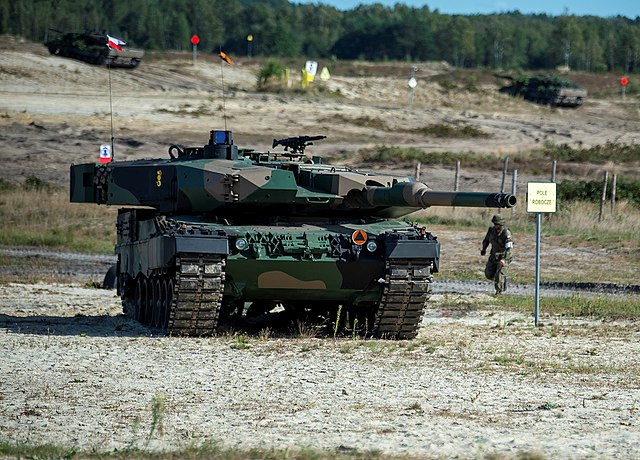
Leopard 2PL
In 2019 the largest long-term program of modernization was voted, spanning up to 14 years and planned a full upgrade or replacement. First off all Leopard 2 main battle tanks are scheduled to be ported to the Leopard 2PL standard, ending as of 2023, starting in March 2018. Poland still had at the time the largest European tank part with 1,009 tanks (249 Leopard 2 (117 Leopard 2A4, 105 Leopard 2A5, 25 Leopard 2PL, 2 Leopard 2NJ) and 232 PT-91 tanks under modernization FY2016, as well as 328 T-72 tanks, with 230 in various modernization stages at Bumar-Łabędy: Radio, digital engine control/start-up, 3rd gen. thermal imaging cameras, new external baskets, and engine unit overhaul for the modern battlefield. The remainder, 200s, were donated to Ukraine whereas was expedited its modernization.
The most mediatic and notorious result of the 2022 invasion was the July 2022, order for no less than 1,000 K2 Black Panther tanks and 460 K9 Thunder howitzers from South Korea for a total of US$2.4 billion. The first K2/K9 arrived by December 2022 with more deliveries coming until 2026. The first brigades were part of the largest Polish military parade to date in 2024. The choice of South Korea was based on immediate mass capacity, something no European country could provide at this time. Despite announces made in 2023-2024, "war production" footing has yet to be turn from political statements. Note that the cost of a Leclerc MBT is €16 million (FY2022) versus 9 million USD currently.
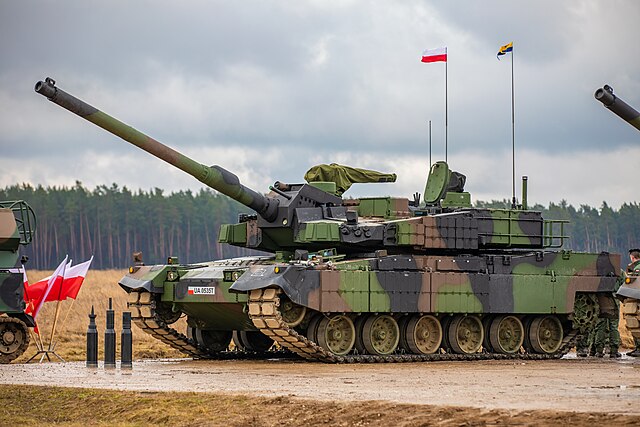
Another high profile, recent program which was accelerated is the the 'Wilk' procurement program with no less than 500 new tanks and plan to replace remaining T-72s and PT-91s by M1A2 Abrams SEPv3 main battle tanks, which has nothing to do with the Wilk program. The program followed the same logic as the K2 contract, to bolster the numbers with immediate stocks. The contract for 250 Abrams M1A2 SEPv3 plus ammunition, spare parts, training, and logistical vehicles was signed on April 6, 2022. The latter are estimated $24 million apiece but on export with all the elements described above.
The new Wilk program (which has nothing to do with a heavy sniper rifle also produed in Poland) is a joint-venture with South Korea for a new all-gigital, last generation MBT which would be built partly in Poland. It is still distinct from the K2PL to be built locally in Poznań to complete the order for 1,000 K2s. Still in early development phase it was earmarked for the 2030s and dubbed a "digital Wilk MBT" between PGZ group, the Poznań facility and Hyundai Rotem. It would feature an extra pair of road wheels for extra armor, new autolmoader and new hydropneumatic transmission. In fact already was exhibited the K2PL Wilk featuring this extra axle. It is also agreed to develop from 2025 both a Combat Engineering Vehicle (CEV) and Armored Recovery Vehicle (ARV) based on the K2PL.
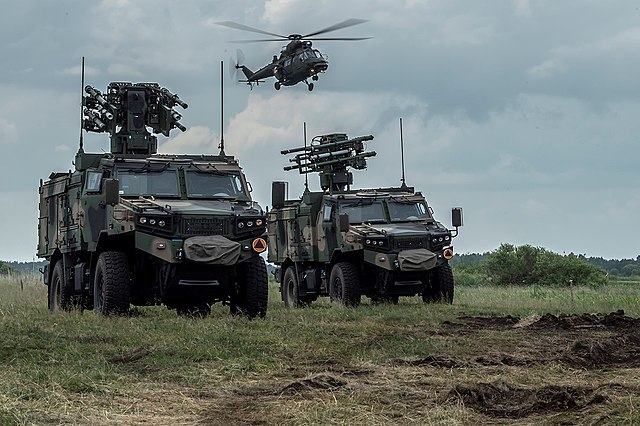
A Poprad Anti-Air missile system
Poland also introduce a mobile air and missile defense, with the Poprad Anti-Air missile systems for very short range (VSHORAD) in final stages of development. The Wisla and Narew procurement programs are going to replace all Soviet legacy systems remaining. Wisla for medium range air defense through two Patriot air and missile defense batteries and IBCS (delivered late 2022) with six further ones later approved. The Narew program is targeting SHORAD and was in design selection in 2023. Meanwhile was ordered a British battery of the Anti-Air Modular Missile (CAMM) short-range as stop-gap to be tested, 23 more batteries on order.

The current bulk of Polish armoured forces, following the 1990s trends for wheeled vehcles, is the KTO Rosomak, of which 863 are in service currently but in the stage of being ported to a new communication standard with digital battlefield displays to be used in concert with the tracked BWP Borsuk infantry fighting vehicle. The latter are scheduled to replace completely the legacy BWP-1 from 2023 onward.
Modernization of artillery, goes through the WR-40 Langusta rocket launchers and Polish Topaz fire control system and by 2019, the MoD ordered twenty M142 HIMARS off the shelf as well as their support vehicles from the US. 122 AHS Krab gun-howitzers are in the process of replacing the other legacy 2S1 Goździk. The new wheeled AHS Kryl SPHs are going to replace another legacy system, the Czech wz. 1977 Dana. And there is a variant of the Rosomak, a total of 122 M120 Rak mortars which production started in 2017, and 60 command vehicles also based on the KTO Rosomak plus associated support vehicles but also a new recce vehicle currently developed from 2014, produced from 2016 called the Rosomak WRT.
The Wilk Program and current expansion
(In redaction)
Modern Polish AFVs

Leopard 2
128 Leopard 2A4, 63 2A5 and 2 Leopard 2NJ (currently in evaluation) are in service.

PT-91 Twardy
An all-out improved and modernized national version of the T-72M1 (1993). 92 Pt-91, 27 PT-91M and 113 PT-91M1 are in service, the oldest pending upgrade to the M1 level.
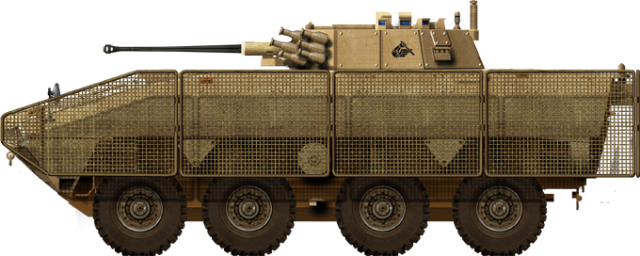
KTO Rosomak (2013)
A locally-produced Patria AMV, 997 to be delivered until 2019. Declined into an IFV and APC version. Above, the Rosomak M1M with anti-RPG nets deployed in Afghanistan. Versions comprises the basic vehicle, the M1, M1M, M2, M3, S, NJ, and WSRiD

BWP Borsuk
The new amphibious IFV derived from the PL-01 prototype. 1400 vehicles planned with 5 variants included one with the ZSSW-30 turret, from 2024. Scheduled to replaced BWP-1s in 2034+.
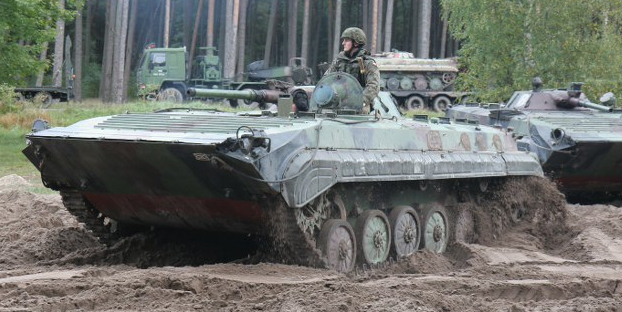
BWP-1
The locally-designated BMP-1 since the 1970s. Remaining BWP-1D (33), BWR-1D (22) and BWR-1S (16) specialized variants are going to be replaced by the BWP Borsuk but the park is still of 916 vehicles today.
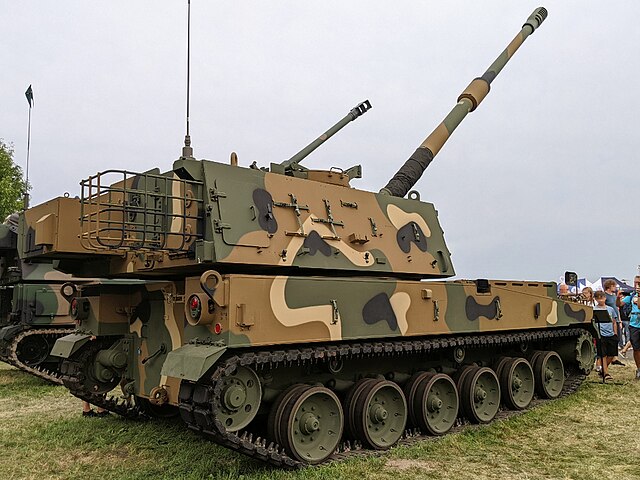
K9
For now, not renamed nor locally produced but straight imported, 218 planned (136 delivered) plus 606 K9PL locally produced from 2026. NATO 155 mm range.
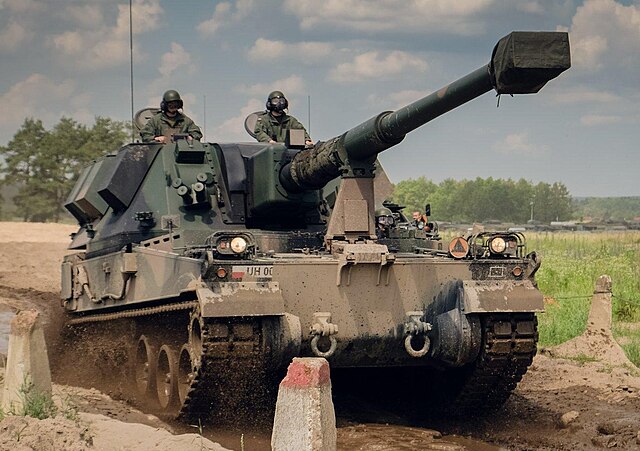
AHS Krab
86 AHS Krab, produced by Huta Stalowa Wola (HSW), from a K9 Thunder chassis and BAE Systems AS-90M Braveheart turret. Full order 170 and 96 in second batch but numbers are disputed. 152 ordered in 2023, and 48 to replace those sent to Ukraine. NATO 155 mm range.
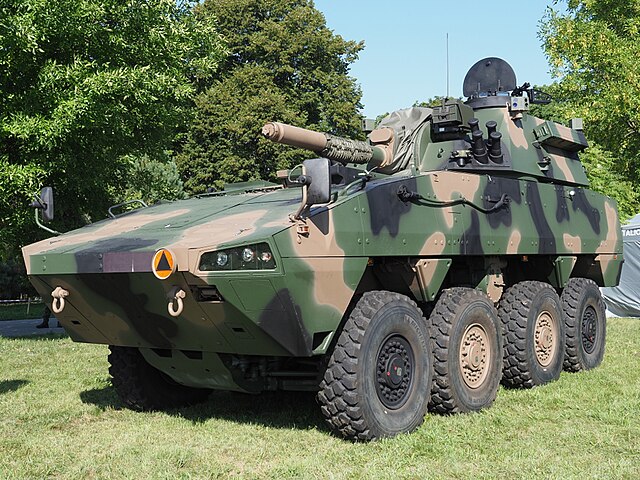
M120 Rak
124 mortar derivatives of the Rosomak were ordered and delivered. The turret could be mounted on other vehicles. 120 mm ammunition.
Wz. 1977 DANA
Legacy Czech-Polish Dana-T (108) and 3 Dana-M but 7 more to come converted from the former. Uses stock Soviet 122 mm shared by the 2S1 Goździk.
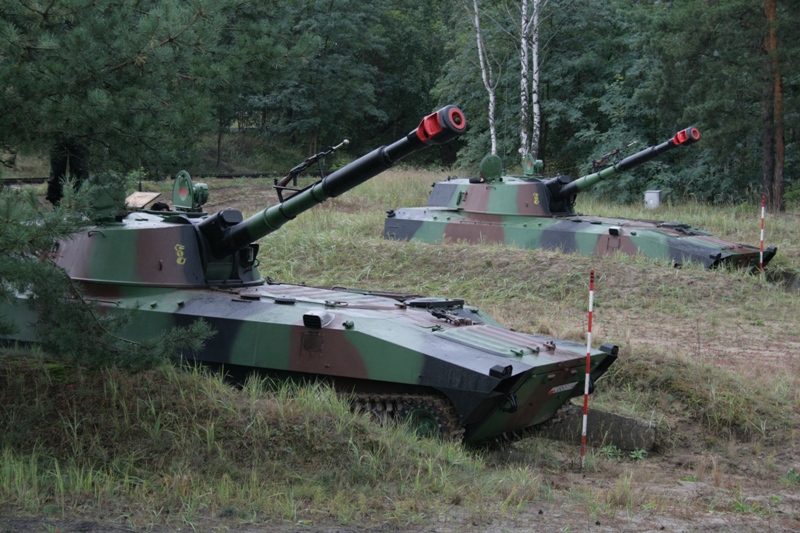
2S1 Gvoździk This Polish self-propelled artillery comprised still in 1991, 324 vehicles.
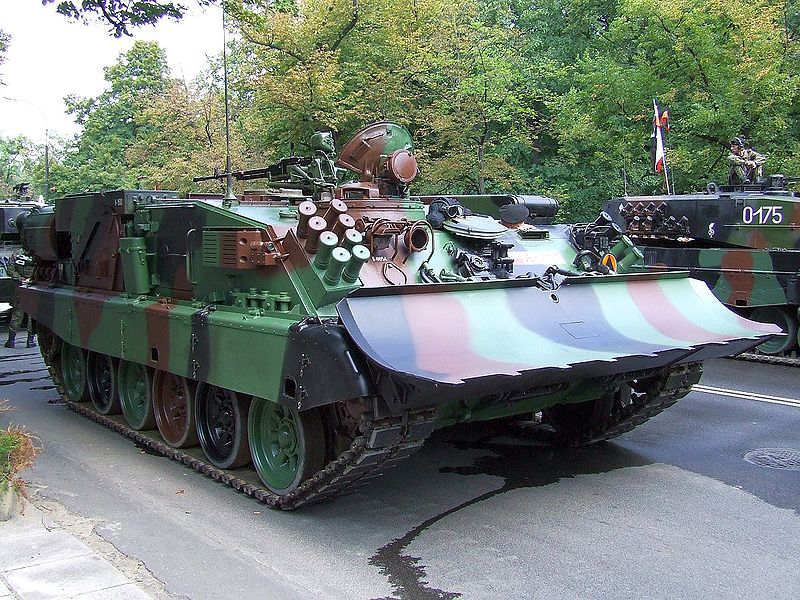
WZT-3M
Only 29 of these ARVs derived from the PT-91 are in service, however, it was a huge commercial success, with 556 being sold to India, and 6 to Malaysia in support to the Pendekar, derived from the PT-91. Others ARVs in polish service are 40 WZT-2 (T-55 derived), 74 WPT Mors (derived from the MT-LB) and 28 Bergepanzer 2.
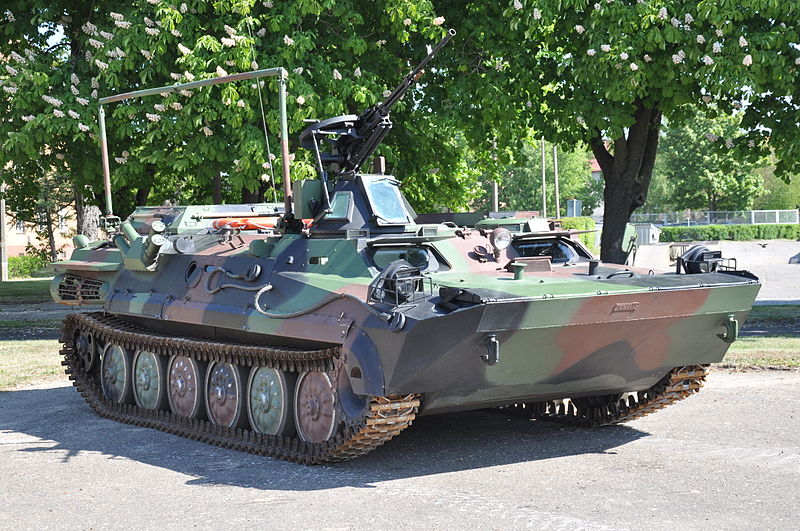
TRI
90 of these CEV and recce vehicles are in service (derived from the MT-LB). Also in service are 8 MID Bizon-S (dozer CEVs), a few amphibious PTS (50 used by the Navy), 24 SUM kalina minelayers, 6 ISM Kroton, 4 Keiler, but also 126 BLG-67 and 6 Bieber bridgelayers.
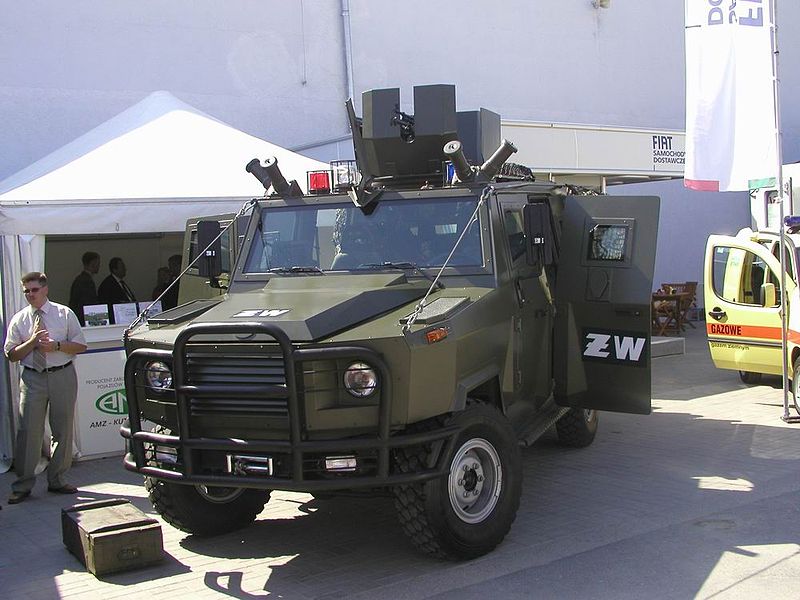
AMZ Dzik
The light vehicles fleet counts many vehicle types, starting with this local, recent Dzik/Dzik-2.
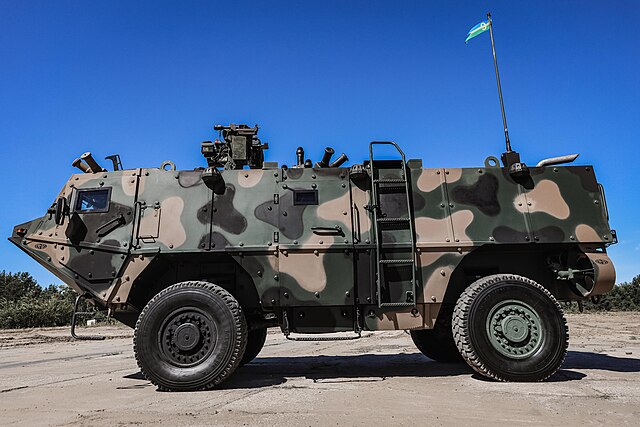
AMZ Bóbr-3
Starting production in 2019 these APCs ("beaver") manufactured by AMZ-Kutno are scheduled to replaced the BRDM-2, with 300 order to be delivered until 2035. Note that Poland also possesses MRAPs, US-built Cougar (300 in 2022) and M-ATV (79 in 2024).
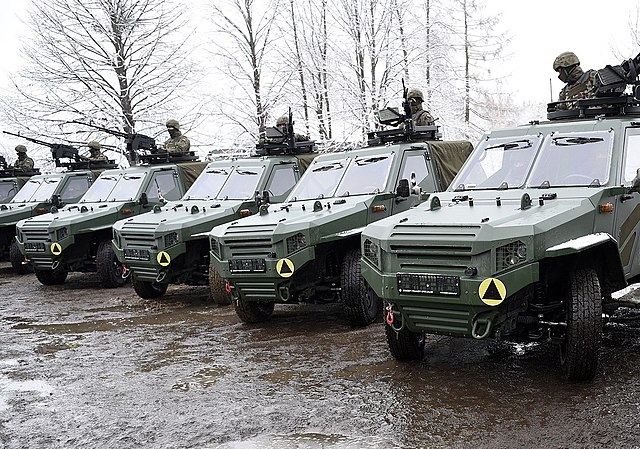
LPU Wirus 4
LPU Wirus 4 is a Light Strike Vehicle for the Polish Armed Forces developed by Polski Holding Obronny for long-range reconnaissance missions and fast strikes, production started in 2017, 118 manufactured so far. Note that Poland still possesses c396 BRDM-2 all scheduled for replaced in the 2030s.
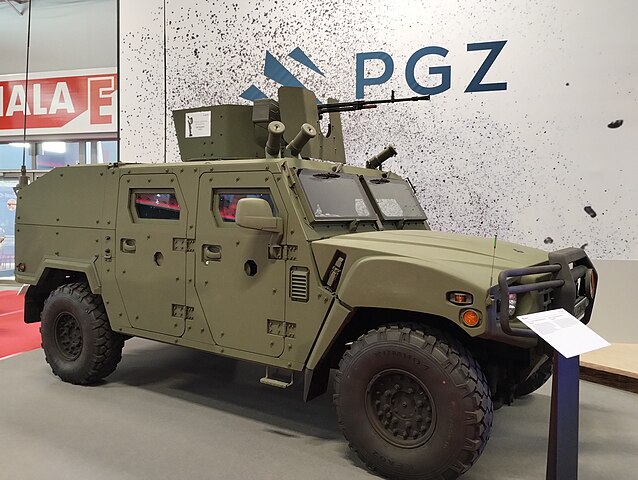
Raycolt KLTV
A light utility vehicle (armoured) jointly developed with Kia of South Korea. 17 delivered from an order of 400 to be manufactured in Poland, from 2024 to 2030. Declined into the Legwan and Legwan L. Note that Poland also still possess locally modified Humvees, some 156 Tumak-2/3 and the M1043A2 fitted with the local Kobus RWS protoype, for a possible conversion.
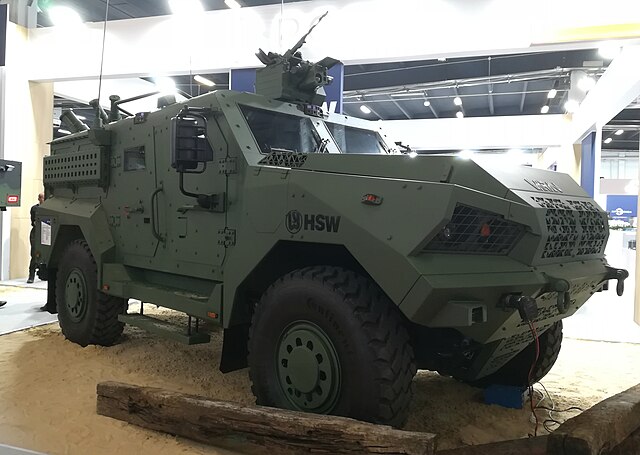
Waran
A new 13 tonnes APC joint-developed with Czech Tatra/Promet Gpe like in the old days. Designed by Huta Stalowa Wola, first version, Command vehicle, local production scheduled 2027-28 for battery/platoon commanders.
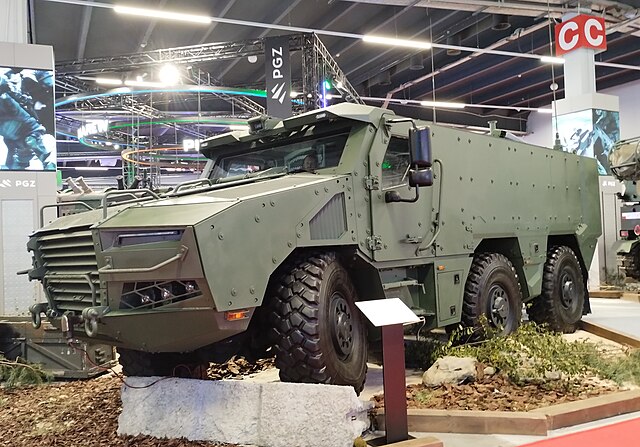
Heron
6x6 APC also developed with Tatra, same order for 2027-2028 and also for commanders (division level).
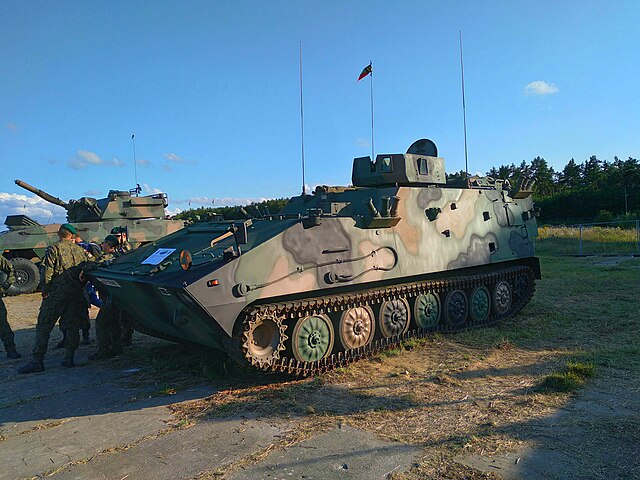
Universal Track Carrier LPG
A rare Polish tracked APC develpped andmanufactured from 2010 by Huta Stalowa Wola. c250 on order, 22 delivered so far. Used also as command vehicle.
Read More
euro-sd.com
defence24.com
Polish Armed Forces
The Polish Land Forces
Official website